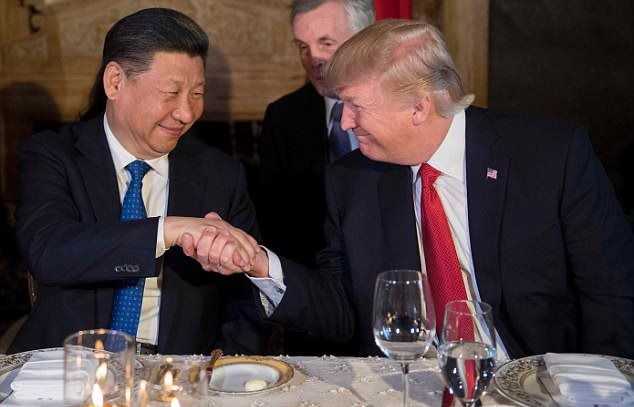Missiles and trade have been hot subjects between the US and China, and the world was watching to see what would happen when Trump hosted Chinese president Xi Jinping for their two-day summit on the 6th and 7th of April. Before his election, Trump insisted that China was “our enemy”, and a Chinese military official said on the day Trump was inaugurated that “A ‘war within the president’s term’ or ‘war breaking out tonight’ are not just slogans; they are becoming a practical reality.” Later, the Chinese military leaked images of China’s newest intercontinental ballistic missile, the Dongfeng-41, being deployed in the Northeastern Heilongjiang province, close to the border with Russia, and yet Kremlin spokesman Dmtiry Peskov was quoted by Sputnik on the 24th of January saying: “Certainly any action in terms of the development of China’s armed forces … is not perceived by us as a threat to our country.” If not Russia, then which country should feel threatened?
Trump accused China of devaluing its currency to flood the US with cheap goods, and he threatened to change decades of so-called ‘one China policy’ by engaging in relations with Taiwan. There have been tensions in the South China Sea, and during his confirmation hearings as Secretary of State, Rex Tillerson said: “We’re going to have to send China a clear signal … They are taking territory or control or declaring control of territories that are not rightfully China’s.”
In response to North Korean missile testing, the US agreed to deploy its ‘THAAD’ anti-missile system in South Korea, which enraged China. In response, China imposed economic sanctions on South Korean businesses, which Secretary of State Rex Tillerson condemned while he was in China last month, saying that “economic retaliation against South Korea is inappropriate and troubling.” After North Korea’s missile tests in March, Trump warned: “I know exactly what’s going on between China and North Korea”. The US has consistently used the issue of North Korea to threaten China, and on the Sunday before the summit, Trump warned that the US was ready to take unilateral action if needed: “China will either decide to help us with North Korea or they won’t…” Tension increased the day before the summit when North Korea test-fired another missile into the sea.
Nevertheless, the summit closed with friendly words about mutual understanding and respect including a shared interest in what the US Treasury Secretary, Steven Mnuchin, described as the “need to get to a more balanced trade environment”. Furthermore, South Korean Prime Minister Hwang Kyo-ahn said that he had a telephone conversation with Trump the morning after the summit ended, but could only report that: “President Trump said he and President Xi held in-depth discussions on the seriousness of North Korea’s nuclear problem and how to respond to it, and also said he had conveyed the U.S. position on the THAAD deployment.” However, the words of mutual praise were not backed by any specific agreement, which indicates that the summit was a diplomatic failure.
The US missile strike against Syria during Trump’s state dinner with his Chinese counterpart was a clear warning of America’s readiness to use force against any nation threatening its interests. However, the upper hand may not be with the US. China’s president made an unexpected stop in Alaska to meet the state governor and to refuel his plane on his way home after the summit, but these are strange. Commercial flights between China and the US are often non-stop, and as Alaska is a state within the US, it is strange for a world leader to visit a state governor. Perhaps, the Chinese president was sending his own messages. First, if Trump considers Taiwan as an independent country, China knows how to regain the initiative. Second, as Trump gave China a show of force with its missile strike against a sovereign nation without the support of international law, Xi Jinping’s stopover in Alaska was a subtle warning that the Chinese nuclear missiles in its north-eastern province can reach the US by flying north east over the arctic circle and Alaska! We will know who wins this showdown by following what happens with the promised THAAD anti-missile system in South Korea, and what concessions the US might secure for non-deployment.
Dr. Abdullah Robin
Written for Ar-Rayah Newspaper – Issue 125

